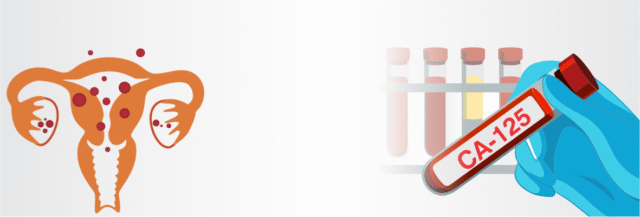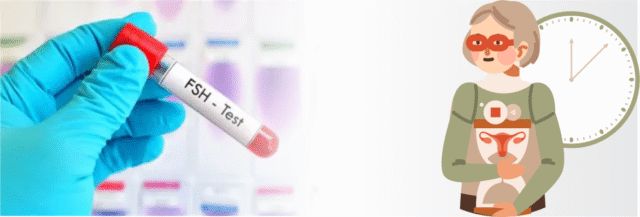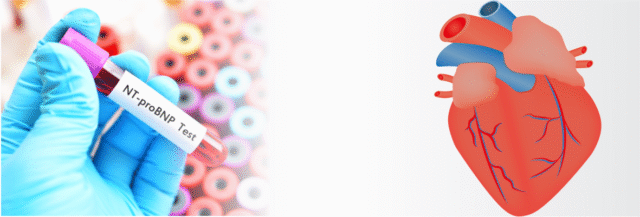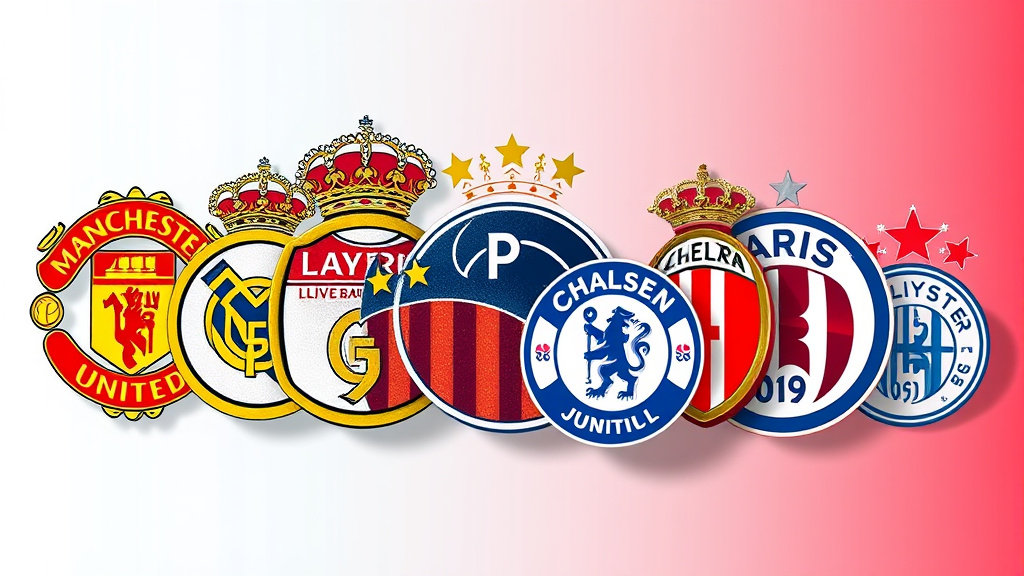Phân tích lối chơi hai đội Aston Villa và Newcastle United Cùng nhà cái Cà Khịa là chủ đề thu hút sự chú ý của nhiều người hâm mộ bóng đá Premier League. Trận đấu giữa hai đội không chỉ đơn thuần là cuộc đọ sức giữa các cầu thủ mà còn là cuộc chiến chiến thuật, phong cách thi đấu đặc trưng và những yếu tố quyết định thành bại của từng đội. Trong bài viết, chúng ta sẽ đi sâu vào phân tích lối chơi Aston Villa – một đội bóng có phong cách thi đấu đặc trưng, cùng với Newcastle United – đội bóng sở hữu sức mạnh tấn công đáng gờm, qua đó giúp người hâm mộ có cái nhìn toàn diện về cặp đấu này qua góc nhìn của nhà cái Cà Khịa.
Phân tích lối chơi hai đội Aston Villa và Newcastle United Cùng nhà cái Cà Khịa sẽ giúp bạn hiểu rõ hơn về các yếu tố chiến thuật, đội hình, nhân sự và các yếu tố tâm lý ảnh hưởng đến kết quả trận đấu. Vì vậy, đừng bỏ lỡ những phân tích chuyên sâu, những dự đoán chính xác từ các chuyên gia và những gợi ý đặt cược thông minh dựa trên tỷ lệ kèo mới nhất của nhà cái Cà Khịa, mang đến cho bạn trải nghiệm cá cược và theo dõi bóng đá đỉnh cao.
Phân tích lối chơi Aston Villa: Điểm mạnh, điểm yếu và chiến thuật chủ đạo
Aston Villa nổi tiếng với lối chơi linh hoạt và tính tổ chức cao trong tấn công lẫn phòng ngự. Họ sở hữu những cầu thủ có khả năng kiểm soát bóng và truyền bóng cực kỳ tinh tế, đồng thời khai thác tốt các vùng không gian trong phần sân đối phương. Đội bóng này chủ yếu dựa vào chiến thuật kiểm soát bóng để tạo ra các cơ hội ghi bàn, phối hợp nhóm linh hoạt và khai thác điểm yếu của đối thủ thông qua các pha đột phá cá nhân và tạt cánh chính xác. Đặc biệt, các cầu thủ tấn công của Aston Villa thường xuyên có khả năng thoát pressing từ đối phương để tạo ra các cú sút và phất bóng dài phù hợp.
Tuy nhiên, điểm yếu của Aston Villa thường nằm ở khả năng phòng ngự trong các tình huống phản công nhanh hoặc bị đối phương khoét cánh. Một số thời điểm, đội bóng này dễ bị mất kiểm soát trong những phút đầu của hiệp 2 hoặc khi các cầu thủ trụ cột chấn thương hoặc thi đấu bị kém tập trung. Chiến thuật chủ đạo của Aston Villa là chơi phòng ngự phản công, tận dụng các pha phản công nhanh để gây bất ngờ cho đối phương và tận dụng các tình huống cố định như phạt góc, phạt đền để ghi bàn.
Ngoài ra, họ cũng thường xuyên sử dụng sơ đồ 4-2-3-1 hoặc 4-3-3, tùy theo tình thế trận đấu, nhằm tối ưu hóa khả năng tấn công cánh hoặc trung lộ. Các cầu thủ trụ cột như tiền vệ trung tâm, hậu vệ cánh và trung phong đảm nhận vai trò then chốt trong chiến thuật này. Sự đa dạng trong lối chơi và khả năng chuyển đổi linh hoạt giúp Aston Villa dễ dàng thích nghi với nhiều đối thủ khác nhau, giúp họ duy trì sự cạnh tranh trong giải đấu.
 Hình minh họa: Cà Khịa – Cà Khịa TV
Hình minh họa: Cà Khịa – Cà Khịa TV Phân tích lối chơi Newcastle United: Sức mạnh tấn công và khả năng phòng ngự
Newcastle United nổi bật với phong cách chơi tấn công nhanh, sở hữu đội hình trẻ trung, năng động và không ngừng cải thiện về mặt chiến thuật. Họ thường áp dụng sơ đồ 4-3-3 hoặc 4-2-3-1 để tạo ra các kịch bản tấn công đa dạng và biến hóa khó lường. Đặc trưng của Newcastle là tấn công dựa trên phản công nhanh, tận dụng khả năng chuyền dài chính xác của các tiền vệ trung tâm, cùng với đó là sự năng nổ của các cầu thủ chạy cánh, giúp kéo giãn hàng phòng ngự đối phương và tạo ra các cơ hội nguy hiểm từ hai biên.
Trong phòng ngự, Newcastle United khá chắc chắn, tập trung vào chiến thuật pressing cục bộ và cắt đường chuyền của đối phương ngay từ khu vực giữa sân. Điều này giúp đội bóng hạn chế các pha tấn công trung lộ và giữ vững thế trận trong phần lớn thời gian thi đấu. Sự chủ động trong phòng ngự, kết hợp khả năng chuyển từ phòng ngự sang tấn công nhanh, đã giúp Newcastle xây dựng một lối chơi linh hoạt, phù hợp với những trận đấu đòi hỏi sức bền và chiến thuật phản công chớp nhoáng.
Ngoài ra, tầm ảnh hưởng của các huấn luyện viên trong việc điều chỉnh lối chơi là yếu tố không thể bỏ qua. Newcastle đã và đang phát triển các sơ đồ chiến thuật phù hợp với từng đối thủ, đồng thời tận dụng tối đa đội hình trẻ trung, năng nổ, đồng đều về mặt thể lực. Sự kết hợp này đã giúp đội bóng trở thành một trong những đối thủ đáng gờm tại Premier League, đặc biệt trong các trận cầu quyết định và những trận đấu mang tính phân định thắng thua cao.
So sánh chiến thuật Aston Villa và Newcastle United: Ai chiếm ưu thế?
Khi so sánh chiến thuật của Aston Villa và Newcastle United, ta nhận thấy rõ ràng hai đội bóng có những điểm mạnh và điểm yếu nổi bật riêng biệt. Aston Villa chú trọng vào kiểm soát bóng, phối hợp nhóm và khai thác các tình huống cố định để ghi bàn, điều này mang lại sự chủ động trong lối chơi và khả năng kiểm soát thế trận khá tốt trong khoảng thời gian dài. Trong khi đó, Newcastle United tận dụng hiệu quả các pha phản công nhanh, chơi bóng dựa trên sức mạnh thể chất, khả năng thoát pressing cũng như sự linh hoạt trong chuyển đổi trạng thái từ phòng ngự sang tấn công.
Ai chiếm ưu thế phụ thuộc phần lớn vào cách đội bóng đó thích nghi và khai thác điểm yếu của đối phương trong từng trận đấu cụ thể. Aston Villa thường tỏ ra mạnh mẽ ở các tình huống kiểm soát bóng và tấn công trung lộ, còn Newcastle tấn công chủ yếu từ hai biên và các pha phản công nhanh. Khi đối mặt với đội bóng có kỹ năng kiểm soát bóng tốt, Newcastle có thể gặp khó khăn trong việc tạo ra mật độ tấn công hiệu quả trừ khi họ tận dụng tốt các sơ đồ chiến thuật phản công.
Chính vì thế, trận đấu sắp tới có thể sẽ là cuộc so sánh chiến thuật giữa hai phong cách thi đấu khác nhau này. Tư duy linh hoạt trong việc điều chỉnh sơ đồ, lựa chọn nhân sự phù hợp và tận dụng các cơ hội phản công, hay kiểm soát bóng, giữ thế trận sẽ quyết định phần lớn thắng thua của từng đội. Các huấn luyện viên cần có những chiến thuật phù hợp để tạo ra sự đột biến và khai thác tối đa điểm mạnh của đội mình trong cuộc so tài này.
Yếu tố then chốt quyết định thành bại của Aston Villa trước Newcastle United
Trong trận đấu giữa Aston Villa và Newcastle United, không thể bỏ qua yếu tố tâm lý cầu thủ là một trong những chìa khóa quan trọng quyết định kết quả. Sự tự tin khi bước vào sân, khả năng giữ vững phong độ trong các pha bóng quyết định, đặc biệt trong các tình huống quan trọng như phạt góc, penalty hoặc các pha phản công chớp nhoáng, sẽ ảnh hưởng lớn đến hiệu quả thi đấu. Huấn luyện viên hai bên cần có chiến thuật phù hợp để giữ gìn sự ổn định tâm lý của các cầu thủ trong suốt trận đấu.
Ngoài yếu tố tâm lý, về mặt kỹ thuật, khả năng tận dụng các cơ hội phản công nhanh hoặc kiểm soát bóng tốt trong các pha tấn công là điểm mấu chốt quyết định thắng thua. Các cầu thủ có chuyên môn cao, đặc biệt là trung phong và tiền vệ sáng tạo, sẽ có ảnh hưởng lớn đến diễn biến trận đấu. Khả năng phòng ngự chặt chẽ của đội hình cũng là điều kiện tiên quyết để giữ vững thành quả hoặc lật ngược thế trận trong các phút thi đấu cuối cùng. Vì vậy, chiến thuật hợp lý kết hợp yếu tố tâm lý vững vàng chính là chìa khóa thành công của đội bóng trong cuộc đọ sức này.
Điều quan trọng nhất là khả năng thích nghi nhanh của hai đội trong suốt trận đấu. Các huấn luyện viên cần có những điều chỉnh chiến thuật phù hợp với diễn biến trận đấu, trong đó tập trung vào việc khai thác điểm yếu của đối phương và duy trì sự tập trung của toàn đội. Một yếu tố then chốt khác là khả năng kiểm soát cảm xúc của các cầu thủ cũng đóng vai trò quyết định trong những phút quyết định của trận đấu. Đây là những yếu tố không thể xem nhẹ nếu Aston Villa hay Newcastle United muốn giành chiến thắng.
Đội hình dự kiến và những cầu thủ chủ chốt của Aston Villa và Newcastle United
Trong dự đoán về đội hình xuất phát của Aston Villa, nhiều khả năng họ sẽ duy trì sơ đồ 4-3-3 hoặc 4-2-3-1, tùy theo chiến thuật cụ thể của huấn luyện viên. Các cầu thủ chủ chốt như trung vệ Tyrone Mings, hậu vệ trái Luca Digne, cùng với trung phong Ollie Watkins luôn giữ vai trò then chốt trong tổ chức phòng ngự và tấn công. Các tiền vệ trung tâm như Douglas Luiz hay Boubacar Kamara sẽ là những người giữ nhịp, phân phối bóng và tạo ra các sáng kiến tấn công xuyên suốt trận đấu. Không thể bỏ qua các cầu thủ chạy cánh như Leon Bailey hay Diaby, họ sẽ giữ vai trò quan trọng trong việc mở rộng căn cứ tấn công và tạo đột biến.
Trong khi đó, Newcastle United vẫn sẽ dựa trên sơ đồ 4-3-3 hoặc 4-2-3-1. Các cầu thủ như goalkeeper Nick Pope, hậu vệ Kieran Trippier, trung vệ Sven Botman, cùng với tiền vệ Bruno Guimarães là những trụ cột không thể thiếu. Hàng tiền đạo gồm Callum Wilson và Allan Saint-Maximin dự kiến sẽ là những người tạo ra các cơ hội nguy hiểm, đồng thời có khả năng ghi bàn từ các pha phản công nhanh hoặc các tình huống cố định. Sự kết hợp giữa các cầu thủ trẻ tràn đầy năng lượng và những cầu thủ già dặn kinh nghiệm tạo nên một đội hình cân đối, phù hợp với chiến thuật phản công nhanh của Newcastle.
Đặc biệt, sự phát triển về nhân sự và chiến thuật trong mùa giải mới đã giúp các đội hoàn thiện đội hình hơn, sẵn sàng cho những thử thách tại Premier League. Trong bối cảnh trận đấu quan trọng sắp tới, các cầu thủ chủ chốt này sẽ phải thể hiện phong độ cao nhất để giúp đội nhà đạt kết quả tốt nhất trong cuộc chiến quyết định này.
Nhận định và dự đoán kết quả trận đấu Aston Villa vs. Newcastle United từ nhà cái Cà Khịa
Dựa trên các phân tích về lối chơi, chiến thuật và phong độ hiện tại, nhận định trận đấu Aston Villa vs. Newcastle United hứa hẹn sẽ rất gay cấn và hấp dẫn. Aston Villa thường chơi linh hoạt, tận dụng tối đa các cơ hội từ các tình huống cố định, trong khi Newcastle mạnh trong các pha phản công nhanh và lối chơi pressing toàn diện. Mặc dù đội chủ nhà có lợi thế sân nhà, nhưng sức mạnh tấn công và khả năng phòng ngự phản xạ của Newcastle cũng không thể xem nhẹ.
Theo các dự đoán của nhà cái Cà Khịa, khả năng trận đấu kết thúc với tỷ số hòa hoặc thắng sít sao dành cho Newcastle United là khá cao. Tuy nhiên, mọi dự đoán chỉ mang tính chất tham khảo và kết quả cuối cùng còn phụ thuộc vào phong độ thực tế của các cầu thủ, yếu tố may mắn và những điều chỉnh chiến thuật của huấn luyện viên trong suốt trận đấu. Người chơi cá cược cần theo dõi sát tình hình để đưa ra quyết định đặt cược chính xác nhất.
Các chuyên gia của nhà cái Cà Khịa nhấn mạnh rằng, để có thắng lợi, Aston Villa cần duy trì sự kiểm soát bóng tốt, khai thác điểm yếu của đối thủ trong các pha bóng cố định và giữ vững tinh thần thi đấu. Newcastle thì cần tận dụng triệt để các pha phản công, phát huy tối đa khả năng dứt điểm của các chân sút chủ lực. Cuộc đối đầu này dự kiến sẽ mang đến không khí sôi động và tập trung cao độ từ cả hai đội bóng.
Phân tích tỷ lệ kèo và gợi ý đặt cược thông minh cho trận Aston Villa – Newcastle United
Tỷ lệ kèo cho trận Aston Villa vs. Newcastle United phản ánh phần lớn các nhận định về khả năng thắng thua của hai đội. Nhà cái Cà Khịa thường đưa Ra các tỷ lệ cược chấp và cược tài xỉu khá hợp lý, dựa trên phong độ và lối chơi hiện tại của các đội. Ví dụ, kèo chấp có thể là Aston Villa chấp 0.25 hoặc 0.5 trái, thể hiện sự cân bằng tương đối nhưng vẫn mang tính chất dự báo đội chủ nhà có khả năng thắng hoặc hòa.
Người chơi cá cược thông minh nên dựa vào các phân tích về đội hình, phong độ của các cầu thủ chủ chốt và các yếu tố khách quan để đưa ra quyết định đặt cược. Gợi ý chung là cân nhắc cược cho đội khách Newcastle United hoặc chọn tài nếu dự đoán trận đấu có nhiều bàn thắng, từ 2.5 bàn trở lên. Tuy nhiên, cần theo dõi các biến động tỷ lệ kèo trong quá trình trận đấu diễn ra để có quyết định chính xác hơn. Điều quan trọng là không đặt cược quá lớn vào một trận mà chưa thật sự chắc chắn, tránh rủi ro không đáng có.
Ngoài ra, các chiến thuật đặt cược như cược chấp, cược tỷ số chính xác, hoặc cược theo biến động kèo của nhà cái Cà Khịa sẽ giúp tối ưu hóa lợi nhuận và giảm thiểu rủi ro trong quá trình cá cược. Phân tích tỷ lệ kèo là một trong những bước quan trọng giúp bạn có chiến lược đặt cược khôn ngoan và hiệu quả hơn trong trận đấu Aston Villa vs. Newcastle United tới đây.
Lịch sử đối đầu Aston Villa vs. Newcastle United: Thống kê và những trận đấu đáng nhớ
Trong lịch sử đối đầu giữa Aston Villa và Newcastle United, có thể thấy rõ sự cân bằng về kết quả thắng, thua và hòa của hai đội. Các trận đấu cũ đã ghi nhận nhiều cuộc đụng độ kịch tính, trong đó không ít trận đấu đi vào lịch sử nhờ những pha bóng đột phá hoặc bàn thắng quyết định. Những trận đấu này thường mang tính chất quyết định về vị trí trong bảng xếp hạng, chính vì thế mà chúng luôn nhận được sự quan tâm đặc biệt của người hâm mộ và giới chuyên môn.
Các trận đấu đáng nhớ nhất thường diễn ra tại các vòng đấu mang tính quyết định trong mùa giải, nơi mà các trận thắng hoặc thua mang lại lợi thế chiến thắng chung cuộc. Thống kê cho thấy, Aston Villa có lợi thế về lịch sử khi thi đấu trên sân nhà, trong khi Newcastle United thường chơi hay hơn trong các trận đấu xa nhà nhờ khả năng triển khai lối chơi phản công biến hoá. Các đối đầu trước đó đều để lại ấn tượng sâu sắc, tạo nên một bối cảnh lịch sử phong phú để dự đoán diễn biến sắp tới của cặp đấu này.
Hiểu rõ lịch sử đối đầu giúp các đội bóng có thêm dữ liệu để chuẩn bị chiến thuật phù hợp, đồng thời giúp các nhà phân tích dự đoán xu hướng thận trọng hơn khi đặt cược hoặc dự đoán kết quả. Nhìn chung, các trận đối đầu Aston Villa – Newcastle United luôn mang đến những khoảnh khắc hồi hộp, căng thẳng nhưng cũng rất đáng nhớ đối với các fan trung thành của bóng đá Anh.
Ảnh hưởng của huấn luyện viên đến lối chơi của Aston Villa và Newcastle United
Các huấn luyện viên đóng vai trò then chốt trong việc định hình lối chơi, chiến thuật và tâm lý thi đấu của đội bóng. Tại Aston Villa, sơ đồ chiến thuật của huấn luyện viên thường dựa trên sự linh hoạt, kết hợp giữa kiểm soát bóng và phản công nhanh. Chính sách huấn luyện khéo léo giúp biến đội bóng này trở thành một tập thể đồng đều, có khả năng thích nghi tốt với nhiều dạng đối thủ khác nhau trên sân.
Trong khi đó, Newcastle United có phong cách chơi tấn công đầy tham vọng, do các huấn luyện viên thường xuyên điều chỉnh để phù hợp với từng trận đấu. Tư duy chiến thuật của họ tập trung vào việc xây dựng hàng thủ chắc chắn, đồng thời khai thác tối đa các cơ hội phản công. Sự phối hợp giữa các cầu thủ trẻ và dày dạn kinh nghiệm được định hình rõ ràng thông qua các chiến lược của ban huấn luyện, qua đó nâng cao khả năng kiểm soát trận đấu và tạo ra các đột biến về phươn thức tấn công.
Chính những đổi mới và chiến thuật linh hoạt của các huấn luyện viên đã góp phần lớn vào thành tích của hai đội bóng trong các mùa giải gần đây. Sự ảnh hưởng của chiến lược gia không chỉ ảnh hưởng đến từng trận đấu mà còn định hướng phát triển dài hạn của đội hình, giúp các đội bóng duy trì phong độ ổn định và hướng tới các mục tiêu cao hơn trong mùa giải mới.
Cà Khịa TV phân tích chuyên sâu trận Aston Villa vs. Newcastle United: Cái nhìn từ chuyên gia
Trong phân tích của các chuyên gia trên Cà Khịa TV, trận đấu giữa Aston Villa và Newcastle United thường được đánh giá là cuộc đọ sức chiến thuật đỉnh cao, nơi mà khả năng thích ứng và điều chỉnh của đội bóng sẽ quyết định thắng thua. Chuyên gia nhấn mạnh về sự đa dạng trong lối chơi của hai đội – Aston Villa với phong cách kiểm soát bóng, còn Newcastle với khả năng phản công đột phá. Sự phân tích dựa trên các dữ liệu thực tế và dự đoán chiến thuật giúp người xem hình dung rõ hơn về diễn biến trận đấu.
Các chuyên gia cũng chỉ ra rằng, trận này có khả năng kết quả bất ngờ, bởi vì cả hai đều sở hữu những cầu thủ có khả năng tạo đột biến và thay đổi cục diện trận đấu. Sự tác động của các yếu tố bên ngoài như thời tiết, sân đấu, và tâm lý cầu thủ cũng là những điểm cần chú ý trong phân tích chuyên sâu. Nhà cái Cà Khịa cung cấp thêm các góc nhìn nhận định chiến thuật, kèo cược và những yếu tố quyết định khác để người hâm mộ và cược thủ có thể dự đoán chính xác và đặt cược thông minh hơn trong cuộc chạm trán kỳ này.
Tổng thể, qua các phần phân tích chuyên sâu, trận Aston Villa gặp Newcastle United hứa hẹn sẽ mang lại những cảm xúc thăng hoa, những bàn thắng đẳng cấp và những cuộc chiến chiến thuật đỉnh cao, xứng đáng để khán giả theo dõi sát sao và đặt niềm tin vào các nhà cái uy tín như Cà Khịa để có trải nghiệm cá cược tối ưu nhất.
Kết luận
Trận đấu giữa Aston Villa và Newcastle United hứa hẹn mang đến nhiều bất ngờ và yêu cầu sự chuẩn bị chiến thuật tối ưu từ cả hai đội bóng. Phân tích lối chơi, các yếu tố chiến thuật, lịch sử đối đầu và vai trò của huấn luyện viên đều đóng vai trò quan trọng định hình kết quả cuối cùng. Người hâm mộ và cược thủ nên dựa trên các dự đoán từ nhà cái Cà Khịa, cùng với các phân tích chuyên sâu để đưa ra quyết định sáng suốt nhất. Hy vọng rằng, với sự chuẩn bị kỹ lưỡng và phong độ cao của các cầu thủ, trận đấu này sẽ là một màn trình diễn bóng đá đỉnh cao, đem lại nhiều cảm xúc thăng hoa cho tất cả người yêu thể thao.





 Hình minh họa: Socolive – Tải socolive
Hình minh họa: Socolive – Tải socolive



 Hình minh họa: Cà Khịa – Cà Khịa TV
Hình minh họa: Cà Khịa – Cà Khịa TV

 Hình minh họa: Cà Khịa – Cà Khịa TV
Hình minh họa: Cà Khịa – Cà Khịa TV

 Hình minh họa: NEW88 – xổ số new88
Hình minh họa: NEW88 – xổ số new88

 Hình minh họa: NEW88 – tải new88
Hình minh họa: NEW88 – tải new88

